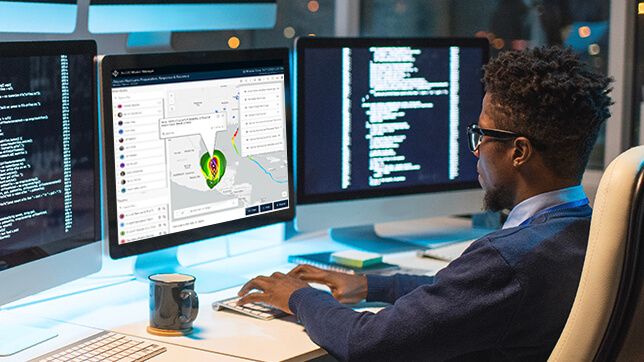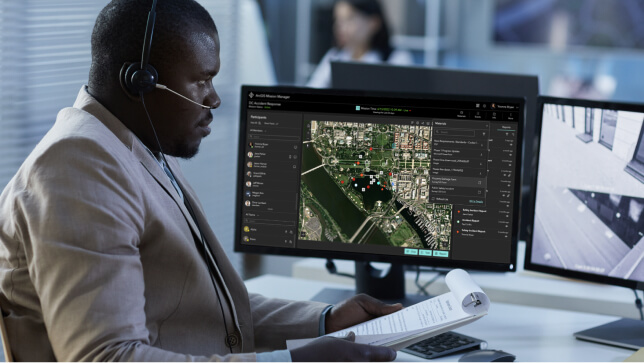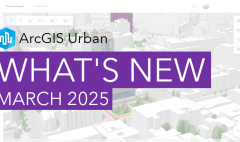Careers in Spatial Data Science
January 29, 2025 2025-01-29 9:16Careers in Spatial Data Science
Careers in Spatial Data Science
The world is generating vast amounts of spatial data, driven by advances in satellite technology, GPS, and the Internet of Things (IoT). As industries increasingly rely on location-based insights, the demand for skilled professionals who can analyze and interpret spatial data is soaring. According to the U.S. Bureau of Labor Statistics, employment in geospatial and data science-related fields is expected to grow significantly in the coming decade, fueled by the need for smarter urban planning, environmental monitoring, and business intelligence. This trend is opening up diverse career opportunities in Spatial Data Science, a field that blends geography, data analytics, and machine learning to solve complex real-world problems.

What is spatial data science?
Spatial Data Science is an interdisciplinary field that combines geographic information systems (GIS), data science, machine learning, and statistics to analyze spatial data. Spatial data refers to any data that has a geographical component, such as coordinates, addresses, or regions. This field helps in understanding spatial patterns, making predictions, and solving real-world problems across various industries, including urban planning, environmental science, logistics, and public health.
Spatial Data Science extends traditional data science by integrating spatial relationships, geospatial algorithms, and mapping techniques. By using tools like Python, R, ArcGIS, and cloud-based GIS platforms (such as Google Earth Engine), spatial data scientists analyze large datasets to uncover geographic trends and patterns.
Career Paths in Spatial Data Science
A career in Spatial Data Science offers numerous opportunities across different sectors. Here are some of the most prominent career paths:
1. Geospatial Data Scientist
Role:
Geospatial data scientists analyze spatial datasets using machine learning, statistical modeling, and GIS tools. They work on problems like predicting climate change impacts, optimizing transportation routes, or analyzing satellite imagery.
Key Skills:
- Proficiency in Python (GeoPandas, Rasterio, Shapely) or R (sf, terra)
- Experience with GIS software like ArcGIS
- Machine learning and statistical analysis
- Remote sensing and image processing
- Cloud computing for big spatial data (Google Earth Engine, AWS, Google Cloud)
Industries:
- Environmental science
- Agriculture
- Government agencies
- Logistics and transportation

2. GIS Analyst / GIS Developer
Role:
GIS analysts and developers focus on mapping, data visualization, and spatial database management. Analysts interpret geospatial data, while developers build custom GIS applications and tools.
Key Skills:
- Knowledge of GIS software (ArcGIS, QGIS)
- Database management (PostGIS, SQL)
- Programming (Python, JavaScript for web GIS applications)
- Spatial analysis and cartography
Industries:
- Urban planning
- Real estate
- Public health
- Government agencies
3. Remote Sensing Specialist
Role:
Remote sensing specialists work with satellite imagery, LiDAR, and drone data to extract meaningful insights for environmental monitoring, agriculture, and disaster management.
Key Skills:
- Image processing (Google Earth Engine, ENVI, ERDAS)
- Machine learning for remote sensing (TensorFlow, Scikit-learn)
- Experience with drone and satellite data
Industries:
- Defense and intelligence
- Climate science
- Agriculture
- Natural resource management
4. Urban and Transportation Planner
Role:
Spatial data scientists in urban planning analyze transportation networks, infrastructure development, and population growth patterns to design efficient cities.
Key Skills:
- Spatial modeling and network analysis
- Traffic flow simulation
- GIS and urban planning software (ArcGIS Urban, MATSim)
Industries:
- Smart city development
- Government agencies
- Real estate

5. Environmental Data Scientist
Role:
This role focuses on analyzing environmental factors like deforestation, air quality, and climate change using geospatial data.
Key Skills:
- Climate and environmental modeling
- Remote sensing for land use analysis
- Spatial statistics and predictive modeling
Industries:
- Conservation organizations
- Government and NGOs
- Climate research
6. Business and Market Analyst (Location Intelligence)
Role:
Businesses use spatial data science to optimize store locations, analyze customer demographics, and improve supply chain efficiency.
Key Skills:
- Spatial econometrics
- Geospatial business intelligence tools (Alteryx, Tableau)
- Consumer behavior analysis
Industries:
- Retail
- Finance
- E-commerce
Skills Required for a Career in Spatial Data Science
To succeed in this field, professionals need a combination of technical, analytical, and domain-specific skills:
1. Programming and Data Science
- Python (Pandas, GeoPandas, Rasterio, Folium)
- R (sf, ggplot2)
- SQL for spatial databases (PostGIS)
2. GIS and Geospatial Tools
- ArcGIS
- Google Earth Engine
- Web mapping (Leaflet, Mapbox)
3. Machine Learning and Statistical Analysis
- Regression models
- Deep learning for geospatial data (CNNs for satellite imagery)
- Spatial statistics
4. Remote Sensing and Image Processing
- LiDAR, drone data, satellite imagery
- Hyperspectral and multispectral analysis
5. Domain Knowledge
Urban planning, environmental science, epidemiology, business intelligence
Future Trends in Spatial Data Science
Spatial Data Science is evolving with advancements in technology. Some key trends include:
- AI and Deep Learning in Spatial Analytics – AI models are improving accuracy in land classification, climate predictions, and urban planning.
- Cloud-Based GIS and Big Data – Platforms like Google Earth Engine and AWS facilitate large-scale spatial analysis.
- Geospatial Blockchain – Blockchain technology is being integrated for secure land records and logistics tracking.
- 5G and Real-Time Geospatial Data – Faster networks enable real-time spatial analytics for smart cities and autonomous vehicles.
- Increased Demand for Location Intelligence – Businesses are investing more in geospatial analytics for strategic decision-making.
Spatial Data Science is a rapidly growing field with applications across diverse industries. Careers in this domain offer exciting opportunities for professionals skilled in GIS, data science, and remote sensing. As technology advances, the demand for geospatial expertise will continue to rise, making it an excellent career choice for those interested in data-driven decision-making and geographic analysis.






